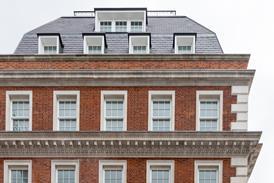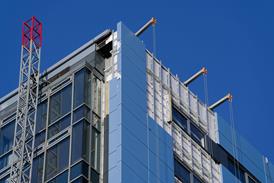Deputy prime minister John Prescott is a big fan of sustainability – so much so that he refuses to open new buildings if they have any parking spaces for energy-guzzling, polluting cars – and Nick Raynsford mentioned sustainable construction at least half a dozen times in his speech at the recent launch of the Construction Best Practice Programme.
There is no doubt that sustainable construction is important to this government, but what does it really mean? Is it just a new way to describe whole-life costing? Does it include planning and transport? And will it affect you? It will affect everyone. The DETR has the bit between its teeth on this issue. But answers to the other queries are tricky. Ask 10 people what sustainable construction is and you will get 10 different answers, from life-cycle costing and waste minimisation to creating self-contained villages to work and live in.
The DETR is due to publish its definitive guide to sustainability in March, following a year-long consultation. But first it will circulate A Guide to Green Construction for Government Estates, advice for government clients that is likely to include many of the principles contained in the sustainability document.
The DETR's Roger Hinds is the author of the guide for government clients. He says the first issue to clarify is the distinction between sustainable construction and sustainable development. Sustainable construction deals with matters such as waste management, energy-conscious design and safety, whereas sustainable development includes social planning issues such as creating workspaces and homes close together so that transport problems are reduced.
Hinds' publication will tackle sustainable construction and, in particular, re-using whole buildings. "The focus will be on adaption rather than new build," he says.
The guide will recommend that all new and refurbished buildings be assessed to BREEAM 98 – a new version of the Building Research Establishment's Environmental Assessment Method. This means that, for the first time, refurbished buildings will be given a green rating. Hinds hopes this will make designers think more about maintenance and life-cycle costs in refurbished buildings.
Hinds also wants designers to consider the long-term use of buildings, creating structures that users cherish. "We don't want another Marsham Street that has to be knocked down after 30 years," he says. "If forced to build anew, we want people to look at energy-efficient buildings, reducing waste and using combined heat-and-power plants."
Defenders of the earth
To ensure that these good intentions are put into practice, Hinds proposes that one member of the design team become the project's "environmental champion". He also suggests that clients can help by structuring design fees around the building's performance. "Maybe 90% of the design fee can be paid up front, with the other 10% paid over the next two years, depending on the performance of the building," he says.
Once a decision has been made to re-use or build new, developers can use whole-life costing to assess the sustainability of the construction. Sustainable construction includes economic sustainability – all players must be able to profit. Consultants and contractors should collaborate to find economically sustainable measures that minimise environmental impact. Often, this is relatively easy. For instance, recycling is cheaper than buying new, although it does require more effort and planning.
Other decisions are harder to call. Energy conscious natural ventilation ranges from cheap, manually openable windows, to expensive building management systems that operate solar shades and roof vents.
Suitable conditions
Even deciding whether or not to use natural ventilation is tough. It seems reasonable to suggest that naturally ventilated buildings will have a lower environmental impact than air-conditioned premises. But this is not the case if they are located on greenfield sites and workers have to drive to the office.
This is precisely the criticism levelled by consultants at the new Ministry of Defence procurement headquarters on the outskirts of Bristol: a wonderful low-energy building but with hundreds of car parking spaces for staff.
In towns, where buildings need to be air-conditioned (natural ventilation is not practical with high levels of pollution and noise), the impact on the environment may not be too severe, as workers use public transport. Moreover, the air-conditioning could be a non-polluting system.
The only way to make informed decisions is to do research. That means added cost. Can this cost be recovered? Tarmac purchasing director Neil MacKenzie, who is a member of the firm's environmental board, says its expenditure on research into sustainable construction has, so far, not been recovered. But, he argues, all the "state-of-the-art" clients the company wants to work with are asking tough questions in this area, and Tarmac needs to impress them with its knowledge.
Some clients may be interested in sustainability and some contractors may be investing in research, but the Construction Industry Council has pointed out a major flaw in the DETR's promotion of energy efficiency issues. Unless it is backed up by regulation, clients will tend to ignore long-term revenue issues in favour of low capital cost, which often means less sustainability. MEPC construction director Kevin Monaghan sums it up: "Energy is as cheap as it has ever been, so most of our clients don't care about issues like natural ventilation." Whether the government is prepared to back the DETR's drive will be unknown until the budget in March. Several proposals are on the table which, if implemented, will show the government is serious about sustainability. Look out for a proposal to make re-use more attractive than new build by lowering VAT on refurbishment work and insulating materials.





















